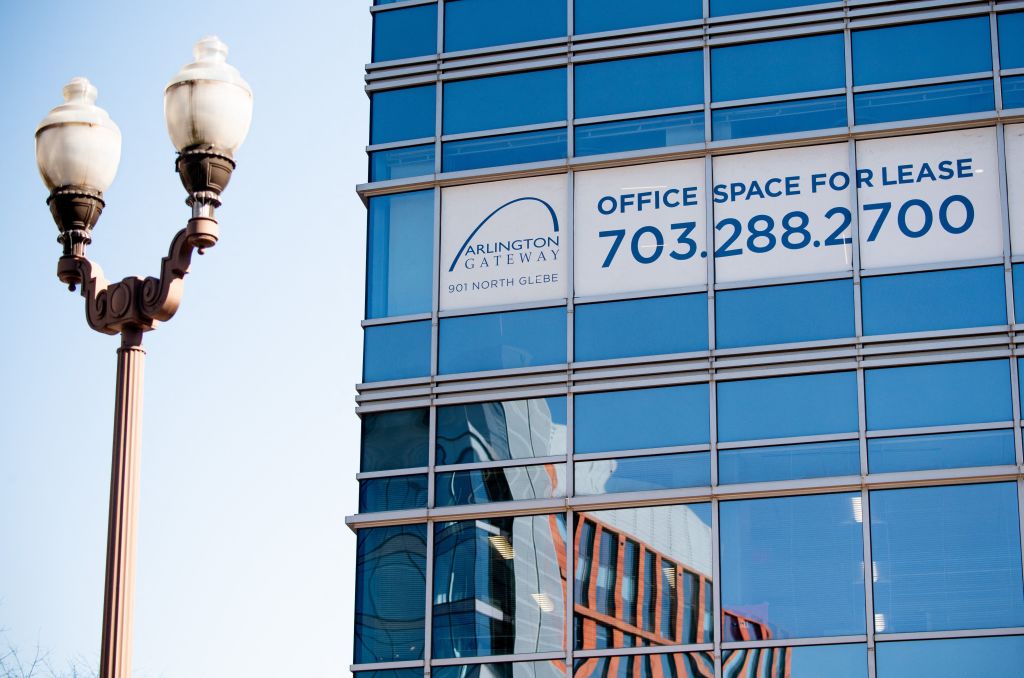Card-carrying pessimists—partisans of the Eeyore Caucus, of which I am a proud member—have been waiting on the commercial-mortgage version of the 2007-08 subprime meltdown for 15 years. That’s a long time to wait for anything, but pessimists are not often disappointed – despair springs eternal.
Here is the issue in brief: This is a terrible time to own office space in most of the country, and a worse time to own it with a big mortgage. Vacancy rates are sky-high, with nearly one-third of commercial space currently unoccupied in once-booming San Francisco, 20 percent empty in Manhattan, etc. There are many reasons for that: organic economic changes, the COVID-driven rise in remote work, the increased crime rates in progressive-run cities around the country, and more. The fight against inflation has required higher interest rates, which is bad news for the holders of the commercial mortgages that are going to have to be refinanced this year—and that includes about one in four of all such mortgages. Move the horizon out to two years from now and you’re talking about more than half of those mortgages. That means that most owners of office buildings are going to see higher mortgage payments at the same time they are suffering lower incomes.
The total amount of outstanding mortgage debt on office buildings at the moment adds up to a little more than $3 trillion—if there are a lot of defaults on those loans, a lot of banks and financial institutions are going to have some gaping wounds in their balance sheets. And, don’t look now, but: Delinquencies are up sharply.
Banks do their accounting in roughly the opposite way their customers do. For you, an outstanding debt is a liability and money in the bank is an asset, but, for a bank, deposits are liabilities and outstanding loans are assets. As with residential mortgages, commercial mortgages end up being “securitized,” meaning sliced and diced and reorganized to create tradable financial instruments. In the 2007-08 mortgage meltdown, securities and investment portfolios were constructed in such a way that everybody would be fine if the default rate never got above a certain point; when the default rate got well above that point, a whole lot of assets that had appeared to be solid gold turned out to be approximately 100 percent iron pyrite.
That’s the thing about fool’s gold—a fool can’t tell the difference, even if we are talking about the smartest fools on Wall Street.
Ironically, securitization was supposed to reduce risk in the financial marketplace, mostly by spreading it around. If Bob’s Bank has to hold all of the mortgages that Bob’s Bank writes, then Bob’s Bank has serious exposure to mortgage defaults. But if those mortgages can be turned into securities spread around 10,000 different financial institutions with well-diversified portfolios, then a collapse in those Bob’s Bank mortgages is going to be one small part of the profit-and-loss calculus of a bunch of different firms rather than an apocalyptic crisis event for one of them. The problem, in a way, was that securitization worked too well: The financial engineering that enabled ever-finer slicing and refining of mortgage portfolios meant that securities could be tailor-made for big institutional investors, securities that were inexpensive to hold and that satisfied, at least on paper, the need for such firms to hold low-risk investments. Mortgage-backed securities ended up dominating the portfolios of many financial institutions rather than making up a relatively small part of a well-diversified portfolio. Wall Street investors make the same mistakes as ordinary-schmo investors: They get greedy and lazy, and they fall for fairy-tales about the sure thing.
Don’t assume that anything is foolproof until you’ve met the fool: Delinquencies on commercial-mortgage-backed securities are high and rising.
Because of the Ben Bernanke big bad bogus bank-bailout buffoonery bonanza (you’re welcome, Jonah), the “too big to fail” institutions have generally grown bigger, and the “systemically important” banks … systemically importanter. On top of that, we had been artificially goosing the economy with ultra-low interest rates for years and years on the theory that truly problematic inflation was something we were only going to hear about in Brady Bunch reruns. Oops. When big chunks of your economy—say, Silicon Valley Bank’s business model and the commercial-mortgage market—are based on artificially low interest rates, then raising interest rates is going to cause all sorts of trouble, some of it foreseeable, some of it unexpected.
There are reasons to be worried about all this, but also some reasons to moderate our pessimism. For one thing, there is reason to believe that commercial borrowers are less likely to default than subprime residential borrowers were back in 2007, because underwriters usually are a little more careful about lending somebody $80 million to put up an office building in Houston than all those “Friends of Angelo” were when it came to liars’ loans for homebuyers at the turn of the century. That being said, a lot of those mortgages are loans that look kind of dumb to a flinty-eyed fiscal puritan: lots of interest-only loans out there.
Also confidence-fortifying: Many developers and lenders have different kinds of properties in their portfolios, and, while office buildings are mostly not doing great, things like industrial facilities and retail space are mostly holding up okay. So are apartment buildings and hotels, with some important exceptions. (San Francisco, man!) The Fed says that the banks it regulates are generally well-positioned to endure a downturn in the commercial-mortgage business, even if that includes a rash of defaults. The majority of commercial-mortgage debt is held by smaller regional banks such as SVB, which have had some problems—but it wasn’t bad mortgages that undid SVB, just incompetent management of interest-rate risk. Unless interest rates go a lot higher, most of that should already have been wrung out of the system.
On the positive side: Outstanding commercial-mortgage debt is only about one-fourth of outstanding residential-mortgage debt, so we are talking about a smaller financial footprint. While there is likely to be some turbulence, there’s a good chance that it won’t be an economy-wide crisis. Rather than a mortgage meltdown, the most likely problem is that good and productive real-estate investments will go unfunded by bankers spooked by dead malls, vacant office buildings, and ghost-town downtowns. Believe it or not, there are some places that still are booming and need new office space, but it might be hard to get money to build it. That is how it is supposed to work, of course: Higher interest rates tamp down inflation by curtailing economic activity. So, this, too, shall pass—like a kidney stone.
There’s no reason to be on the ledge singing “In the Sweet By-and-By” just yet. But the thing about financial crises is, they tend to unfold in ways that nobody was expecting. Every time Jerome Powell tells me that everything is okay, I put another case of beans and another box of ammo in the basement.
Eeyore gonna Eeyore.







Please note that we at The Dispatch hold ourselves, our work, and our commenters to a higher standard than other places on the internet. We welcome comments that foster genuine debate or discussion—including comments critical of us or our work—but responses that include ad hominem attacks on fellow Dispatch members or are intended to stoke fear and anger may be moderated.
With your membership, you only have the ability to comment on The Morning Dispatch articles. Consider upgrading to join the conversation everywhere.